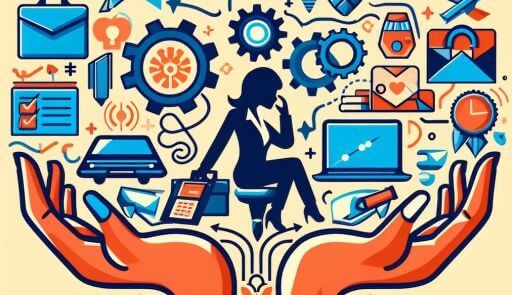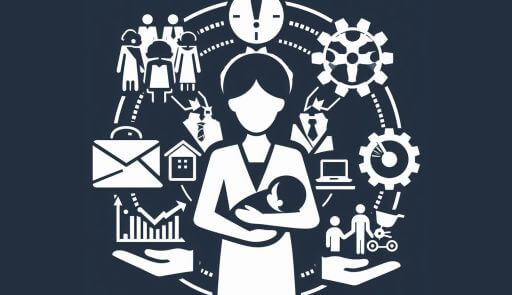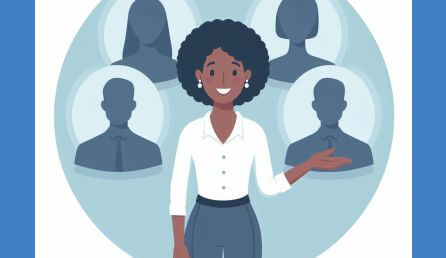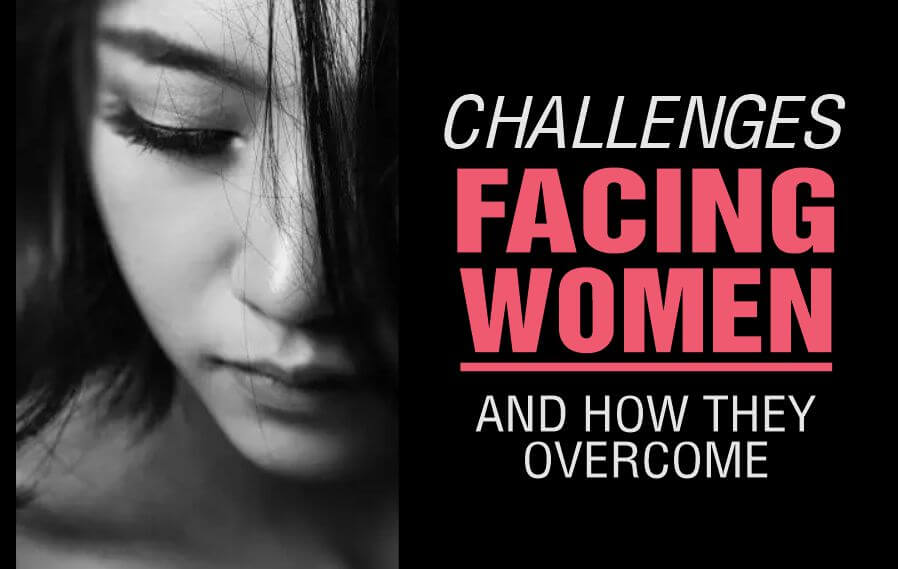Last updated on March 3rd, 2024 at 05:30 am
Discover the daily challenges women face, from gender discrimination to work-life balance, and how they overcome them with resilience.
Women face unique challenges in many areas of life that impact their personal and professional growth.
However, they have consistently demonstrated resilience and determination in overcoming these challenges.
We have isolated these challenges in this article into three different categories including the challenges women face in the workplace, at home and in social situations.
Identifying these challenges helps to find ways to nip them in the bud for women to feel appreciated for all they do in society.
Let’s go…
Recommended: Common Etiquette and Manners for Women
Table of Contents
- Challenges Women Face in the Workplace
- Challenges Women Face in the Family
- Challenges Women Face in Social Situations
- How Women are Tackling their Challenges in Society
- Frequently Asked Questions
- A Word from the Conducts of Life
Challenges Women Face in the Workplace
Women face a lot of challenges in workplaces ranging from gender stereotypes, to wage gaps,s and more.
Let’s take a closer look…
1. Glass Ceiling

The glass ceiling is one of the challenges women face in the workplace.
The glass ceiling is an invisible barrier that prevents women from advancing to higher levels of leadership and management within organizations.
This barrier is often due to gender discrimination and stereotypes, limiting women’s opportunities for career advancement and equal representation in top positions.
Despite their qualifications and abilities, women may find it difficult to break through this barrier, leading to unequal opportunities and underrepresentation in senior roles.
How to Overcome Glass Ceiling: To break the glass ceiling, there needs to be advocacy for equal representation in leadership positions, provide mentorship and sponsorship programs, address unconscious bias, and foster inclusive workplaces that value and reward talent equally.
Related: Impact of Gender Stereotypes on People
2. Gender Discrimination
Another of the challenges women face in the workplace is gender discrimination.
Gender discrimination is the unfair treatment of people based on their gender, with women often being the primary victims in the workplace.
It covers unequal access to opportunities, lower pay, limited career advancement, and biases in various spheres of life.
This challenge perpetuates inequality, stifles women’s potential, and hinders their personal and professional growth.
Overcoming Discrimination: To overcome discrimination against women in society, we must promote gender equality through education, challenge biased cultural norms and stereotypes, ensure equal access to opportunities, and enforce effective anti-discrimination laws.
Related: The Powerful Intuition of Women
2. Wage Gap
The wage gap refers to the disparity in earnings between women and men performing similar work.
Despite advancements, women continue to earn less than their male counterparts, resulting in a persistent wage gap.
Factors such as occupational segregation, discrimination, and limited negotiation power contribute to this challenge.
The wage gap not only hampers women’s financial stability but also perpetuates gender inequality.
How to Overcome Wage Gap: To overcome the wage gap for women, society must implement and enforce equal pay legislation, promote gender diversity in leadership positions, and encourage transparent salary negotiations.
Related: 11 Reasons Why Women Love Drama
3. Lack of Representation in Leadership Positions
The lack of representation of women in leadership positions in the workplace is a significant challenge as it perpetuates gender inequality and hampers progress towards gender parity.
Without adequate representation in the workplace, women face limited opportunities for influence, decision-making, and advancement.
This systemic bias reinforces societal norms that hinder women’s empowerment and obstruct their ability to co-create a more inclusive and equitable society.
How to Overcome: To overcome this, organizations should implement diversity initiatives, provide leadership training and mentoring specifically for women, and actively promote women into decision-making roles.
Related: How To Be Beautiful From The Inside
4. Work-life Balance Issues

Work-life balance issues pose a key challenge for women in society.
Juggling professional responsibilities with family and personal commitments can lead to increased stress levels, burnout, and limited time for self-care.
Women often face societal expectations and gender roles that place a heavier burden on their shoulders, making it difficult to achieve a harmonious balance between work and personal life, impacting overall well-being and career progression.
How to Overcome: Women can overcome work-life balance issues by setting boundaries, prioritizing self-care, delegating tasks, and seeking flexible work arrangements when possible.
Also Read: The Type of Women Men Can’t Afford to Lose
5. Sexual Harassment
Sexual harassment is the unwelcome behaviour of a sexual nature women encounter in the workplace.
It creates an intimidating, hostile, or offensive environment for women.
It can include unwanted advances, comments, or physical contact.
This pervasive issue undermines women’s sense of safety and equality in various social settings, impacting their well-being, opportunities, and overall participation in society.
How to Overcome: Women can overcome sexual harassment in the workplace by speaking out, seeking support from allies and authorities, and advocating for policies that promote a safe and respectful environment.
Related: A Peek Into The Inner Lives Of Women
6. Stereotyping and Bias

Stereotyping and bias are significant challenges that women face in the workplace.
Women often encounter preconceived notions and unfair judgments based on their gender.
This can lead to limited career opportunities, unequal pay, and a hostile work environment.
Overcoming these stereotypes and biases is crucial for promoting gender equality and creating inclusive workplaces that allow women to thrive and succeed on equal terms.
How to Overcome: Women can overcome gender bias in the workplace by advocating for themselves, setting boundaries, seeking allies, and challenging stereotypes through their achievements and contributions.
Related: Embracing Femininity To Feel Confident And Beautiful
9. Lack of Support for Maternity Leave and Childcare
The lack of support for maternity leave and childcare forces many women to choose between their careers and family responsibilities, leading to career interruptions and financial strain.
Without adequate support, women may face difficulties re-entering the workforce and advancing in their careers, perpetuating gender disparities and limiting their professional growth.
How to Overcome: Women can overcome the lack of support for maternity leave and childcare by advocating for family-friendly policies, seeking employer accommodations, and accessing community resources for childcare assistance.
Related: The Red Flags: 12 Big Signs Of Toxic Masculinity
Challenges Women Face in the Family

Family should be the safest place for every woman, but this is not to be as many women encounter the following challenges below:
1. Unequal Division of Household Labour
The unequal division of household often results in women bearing the majority of domestic responsibilities, impacting their time, career opportunities, and overall well-being.
This imbalance can lead to feelings of exhaustion, stress, and inequality, hindering women’s ability to pursue personal interests and professional advancement while maintaining a healthy work-life balance.
How to Overcome: Overcoming the unequal division of household labor involves open communication, setting clear expectations, sharing responsibilities, and promoting mutual respect within the household.
2. Balancing Work and Family Responsibilities
Balancing work and family responsibilities is a challenge women encounter at home.
Juggling career demands with caregiving duties often leads to stress, guilt, and burnout.
Women may struggle to meet professional expectations while fulfilling their roles as caregivers, impacting their well-being and career advancement.
This challenge underscores the need for supportive policies and societal attitudes that promote work-life balance and gender equality.
How to Overcome: Overcoming the challenge of balancing work and family responsibilities involves setting boundaries, prioritizing tasks, seeking support, and advocating for flexible work arrangements when possible.
Related: How A Gentleman Treats A Lady: The 4 Basic Attitudes
3. Lack of Support for Childcare and Eldercare
The lack of support for childcare and eldercare is a significant challenge for women at home.
Balancing professional responsibilities with caregiving duties becomes daunting without accessible and affordable care options.
Women often face the burden of arranging and managing care, impacting their career opportunities and personal well-being.
How to Overcome: Overcoming the lack of support for childcare and eldercare involves advocating for family-friendly policies, accessing community resources, and promoting shared caregiving responsibilities.
4. Gender Role Expectations and Stereotypes
Gender role expectations and stereotypes is one of the challenges women face at home.
Societal norms often dictate traditional roles and behaviors, placing pressure on women to fulfill specific domestic duties and caregiving responsibilities.
This can limit their personal and professional aspirations, perpetuate inequality, and create barriers to individual fulfillment.
How to Overcome: Overcoming this challenge involves challenging stereotypes, promoting inclusivity, and fostering equal partnerships within households.
5. Limited Decision-making Power in Family Matters

Limited decision-making power in family matters is a problem women put up with at home.
Traditional gender dynamics may marginalize women’s voices in important family decisions, impacting their autonomy and well-being.
This can lead to unmet needs and unfulfilled aspirations.
How to Overcome: Overcoming this challenge involves promoting mutual respect, open communication, and equitable decision-making processes within the family unit to ensure women’s voices are heard and valued.
6. Emotional Labour and Mental Load
Emotional labour and mental load are a challenge facing women in the home which often make women bear the responsibility for managing the family’s emotional well-being, organizing household tasks, and remembering important details.
This invisible workload can lead to stress, exhaustion, and feelings of being overwhelmed.
How to Overcome: Overcoming this challenge involves sharing responsibilities, open communication, and recognizing and valuing each other’s contributions within the household.
7. Financial Dependence
Financial dependence is a prevalent challenge for women at home.
In many households, women may lack financial autonomy, leading to vulnerability in the event of economic instability or relationship changes.
This dependence can limit their freedom and decision-making power.
How to Overcome: Overcoming this challenge involves promoting financial literacy, pursuing economic opportunities, and advocating for equitable financial arrangements within the household.
Challenges Women Face in Social Situations

Women face challenges in social situations ranging from body shaming, double standards in behaviour, and more you will see below.
1. Objectification and Sexualization
Objectification and sexualization are pervasive problems for women in social situations.
These issues undermine women’s autonomy and contribute to a culture of harassment and inequality.
Women often face judgment based on their appearance, leading to feelings of discomfort and insecurity.
How to Overcome: Overcoming this challenge involves promoting respect, challenging objectifying behaviors, and fostering environments that value individuals for their abilities and character rather than their appearance.
2. Pressure to Conform to Societal Beauty Standards/Body Shaming

The pressure to conform to societal beauty standards is a problem women battle within society.
This pressure can lead to body image issues, low self-esteem, and mental health challenges.
Women often feel compelled to meet unrealistic beauty ideals, impacting their confidence and well-being.
How to Overcome: Overcoming this challenge involves promoting body positivity, challenging beauty norms, and fostering inclusive environments that celebrate diverse appearances.
3. Double Standards in Behaviour and Expectations
Double standards in behaviour and expectations is a problem women have battled with for a long time.
Women often face judgment and criticism for actions that would be deemed acceptable for men, leading to unfair treatment and limitations on personal expression.
How to Overcome: Overcoming this challenge involves challenging gender biases, promoting equality, and advocating for fair and consistent standards for behavior and expectations across genders.
8. Microaggressions and Subtle Forms of Sexism
Microaggressions and subtle forms of sexism pose significant challenges for women in social situations.
These subtle, often unintentional, discriminatory behaviours can undermine women’s confidence and sense of belonging.
How to Overcome: Overcoming this challenge involves raising awareness about microaggressions, promoting respectful communication, and fostering environments that actively address and discourage subtle forms of sexism to create a more inclusive and equitable society.
How Women are Tackling their Challenges in Society

Women are overcoming their challenges in society through various means and strategies.
Some of how they are addressing and surmounting these hurdles include:
- Access to quality education empowers women and efforts are being made to increase enrollment, improve quality, and promote higher education opportunities.
- Women are breaking barriers and seeking leadership roles in traditionally male-dominated fields, challenging stereotypes and demanding equal representation.
- Women are actively engaging in grassroots movements, advocacy, and activism to address gender-based violence, workplace discrimination, and inequality.
- Support networks and mentoring programs uplift and empower women by providing guidance, resources, and opportunities for advancement.
- Efforts are ongoing to challenge and redefine societal norms and stereotypes that limit women’s opportunities and roles.
- Legal reforms are being implemented to address gender-based discrimination and promote women’s rights, such as preventing harassment and ensuring equal pay.
- Positive representation of women in media, arts, and popular culture helps challenge stereotypes, inspire young girls, and shape societal attitudes.
Frequently Asked Questions
What are the main challenges faced by women?
The main challenges faced by women include gender discrimination, unequal opportunities, limited representation in leadership, and balancing work and family responsibilities.
How can overcome the challenges faced by women?
Women can overcome these challenges by advocating for gender equality, accessing education and mentorship, promoting supportive policies, and challenging societal norms.
What are the challenges facing women in the 21st century?
In the 21st century, women face challenges such as gender inequality, workplace discrimination, balancing career and family, and addressing gender-based violence and harassment.
What are the biggest challenges facing female leaders today?
The biggest challenges facing female leaders today include breaking through glass ceilings, overcoming gender biases, balancing leadership roles with family responsibilities, and advocating for equal opportunities.
A Word from the Conducts of Life
Despite the challenges they face, women continue to overcome obstacles and make remarkable strides in various domains.
By addressing gender inequality, discrimination, work-life balance, and other barriers, women are paving the way for a more inclusive and equal society.
Their resilience, determination, and collective efforts serve as an inspiration for generations to come, ensuring a brighter and more equitable future for women worldwide.
References:
- https://news.gallup.com/poll/2998/challenges-women-face-their-daily-lives.aspx
- https://www.quora.com/What-are-some-problems-faced-by-women-in-daily-life
- https://opportunity.org/news/blog/2014/12/6-pressing-challenges-facing-women-and-girls-and-how-were-helping
- 6 Big Challenges Facing Women and Girls – And How to Help
Pious Clements is the insightful voice behind "The Conducts of Life" blog, where he writes about life ethics, self-development, life mastery, and the dynamics of people and society.
With a profound understanding of human behaviuor and societal dynamics, Pious offers thought-provoking perspectives on ethical living and personal growth.
Through engaging narratives and astute observations, he inspires readers to navigate life's complexities with wisdom and integrity, encouraging a deeper understanding of the human experience and our place within society.



